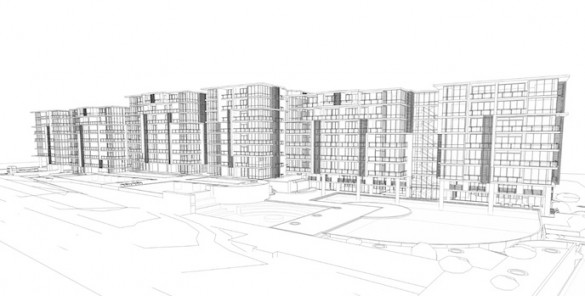
Mixed-income neighborhoods help improve the safety and wellbeing of low-income residents, but cannot relieve deeply entrenched poverty or provide upward mobility without additional social services and supports, say Peabody and University of Chicago researchers in a new report titled “Making Mixed-Income Neighborhoods Work for Low-Income Households.”
The paper, prepared for Cityscape, the primary publication of the U.S. Department of Human and Urban Development, looks at the hits and misses of mixed-income housing policy. James Fraser, associate professor of human and organizational development, and Joshua Bazuin, a postdoctoral fellow at the Vanderbilt Institute for Energy and Environment and former advisee of Fraser, are co-authors of the paper along with Robert Chaskin, professor of social services administration at the University of Chicago. Fraser also guest-edited the issue, which is devoted to the examination of mixed-income housing from many angles.

The policy of integrating subsidized housing units with market-rate units gained popularity in the ‘90s. It derived from idea that the problems of poverty become exacerbated when poverty affects the whole neighborhood, depriving entire communities of meaningful connections to employers and social institutions.
Mixed-income housing was implemented with the intention that middle-class residents would bring those connections to communities that lacked them. The idea was that an unemployed person would have a better chance of finding a job if he or she knew someone else who had one. Or a middle-class homeowner might feel more empowered than a poorer renter to press the police or local government about a quality-of-life issue that affects the whole neighborhood.
But simply housing struggling residents near more successful ones, Fraser and his co-authors found, is not enough to help public housing residents move out of poverty.
The researchers identified four key areas that could make mixed-income housing more useful to low-income residents.
Neighborhood Life: Low-income and middle-income neighbors usually do not interact enough for the poor to benefit from their more affluent neighbors’ social clout, Fraser says. In fact, there are often clashes of culture and class. Incorporating shared amenities like a community garden or café into these communities can bring people together in a positive way, Fraser suggests, and an inclusive, well-supported neighborhood association could promote greater solidarity.
Housing: Critics of mixed-income housing note that while middle-income newcomers reap the benefits of investing in an up-and-coming neighborhood, low-income residents are rarely able to earn enough to participate in the real estate market, even if they are employed, Fraser said. “[lquote]While homeownership tends to be the primary source people have for gaining wealth, it is oftentimes simply out of reach without targeted efforts to get people prepared.”[/lquote] The researchers recommend that mixed-income housing plans include enough affordable housing units and implement a variety of financial policies to help low-income residents become homeowners, too.
Social Services: Low-income residents often face basic logistical barriers to employment like lack of childcare or transportation. Though it is difficult to address transportation issues with a housing plan, the researchers note that childcare could be accommodated simply by establishing a neighborhood childcare co-op.
Employment: Mixed-income housing alone does not connect low-income residents to the kind of well-paying jobs that would help them move out of poverty, the researchers say. Future public housing schemes need more than just a job center. “There are a wide range of challenges people have to maintaining employment that need to be addressed over time,” Fraser said. The researchers point to an intensive, long-term job employment program in Chicago as an example of the level of support required to be effective. The program does not simply train job seekers and place them, it provides ongoing contact and follow-up after placement to help its clients succeed at their jobs.
Mixed-income housing is not a failure, the researchers note. Low-income residents of these neighborhoods do benefit from living in buildings that are better maintained and more energy efficient than older housing units, and mixed-income neighborhoods do tend to be safer. But housing is only one piece of the puzzle.